
11 minute read
PROJECT DEVELOPMENT
J.D. Irving Ltd. built a wood pellet manufacturing plant at its sawmill in St. Leonard, New Brunswick, Canada, to utilize its process wood waste. The company now exports pellets to overseas customers via the Port of Belledune. PHOTO: GRAND RIVER PELLETS LTD.

Sawdust Strategies
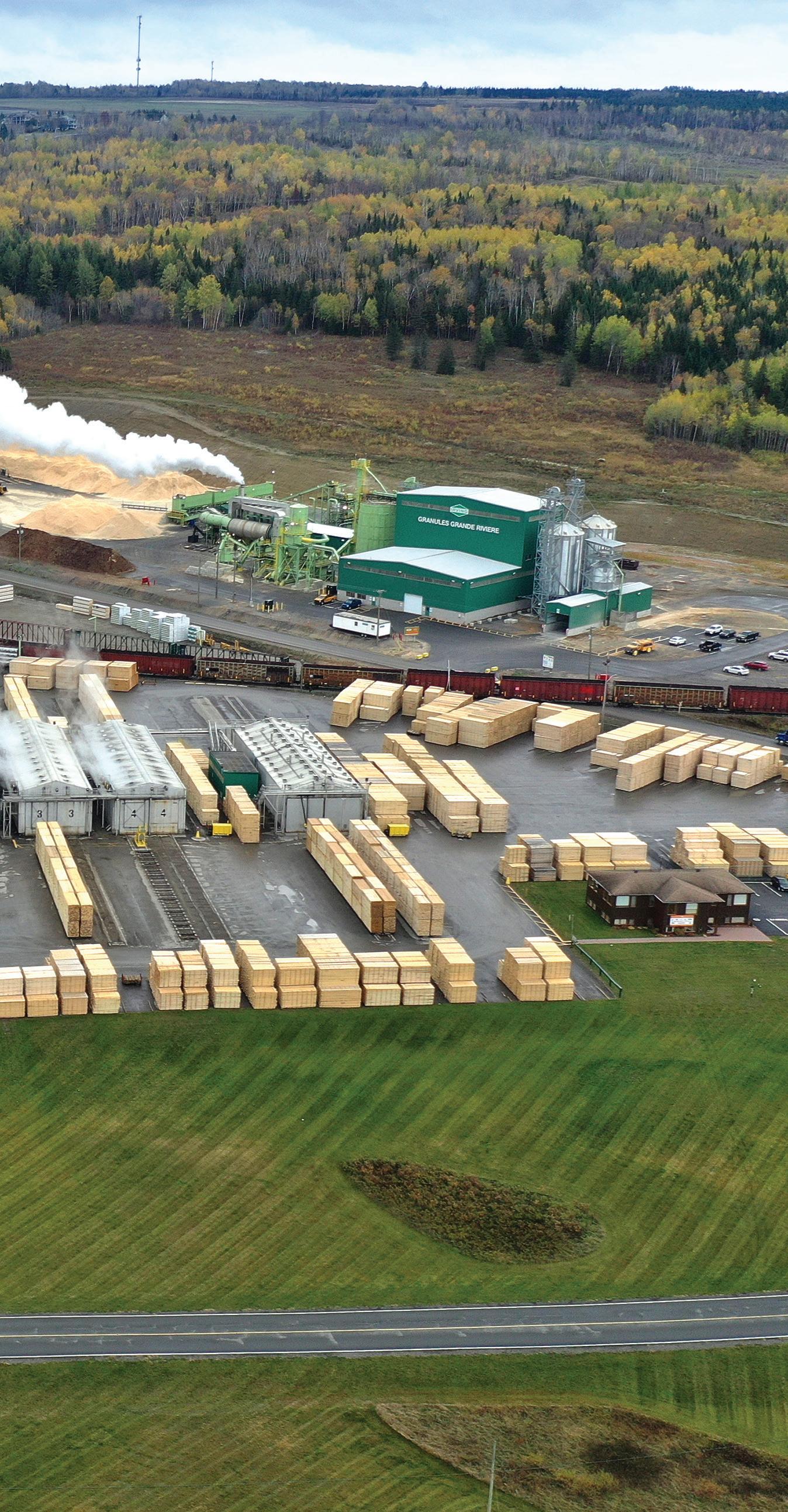

Whether a joint venture, solo on-site project or part of a developer’s fiber-sourcing strategy, use of sawmill residue for pellet production presents advantages. BY ANNA SIMET When J.D. Irving Ltd. began construction of its 100,000-ton-per-year wood pellet plant in St. Leonard, New Brunswick, in 2018, around 10 percent of the logs processed in its lumber mills ended up in the form of sawdust, shavings and bark. At the time, the company was relying on regional customers to consume those residues, says Nicholas MacGougan, general manager of Grand River Pellets Ltd. “Sometimes, changing markets could make managing the fl ow of them challenging,” he says. “We had been considering a pellet mill for multiple years and had visited many plants and end users to learn about the industry. The positive business case and adding more value to our residues internally was the catalyst that drove us to move forward with construction.”
The $30 million plant, which consumes fi ber from the adjacent sawmills and several others in New Brunswick and Maine, took a year to build and now employs roughly 25. It produces home heating pellets as well as industrial fuel exported at the Port of Belledune, where its fi rst overseas shipment set sail for England on Aug. 6. “Wood pellets were a good choice to stabilize the sales volume and add more value to our fi ber,” MacGougan says.
J.D. Irving is an example of an operation well-positioned to capitalize on its own “waste” through the manufacture of pellets, a common model for sawmills in Europe. There, most pellet plants were built on-site by owners to make use of residual fi ber, with product largely sent into the residential heating market. “They were built to deal with the residuals— sawdust, bark, chips, etcetera,” says William Strauss, president of FutureMetrics Inc. “It’s essentially the ‘right’ model for maximizing effi ciency in many ways. First, the economics—eliminating the time getting material to pellet plant, and certainly reducing or eliminating the cost of transporting, especially if there is a conveyor from the sawmill to pellet mill. Also, there are environmental effi ciencies, and there are some operations that go even further with energy integration between the two.”
In North America, the wood pellet industry has developed quite a bit differently than in Europe. “This [on-site model] didn’t happen so much,” Strauss says. “Mostly, pellet mills are independent businesses that are, in some cases, dependent on sawmill by products. Here, it’s a different market that was later to the game.”
While some northern pellet plants are colocated with or near sawmills, by and large—and more so in the U.S. than in Canada—roundwood is the predominant feedstock. “Most of the industrial [pellet] mills down south are bringing in

roundwood, thinnings and nonmerchantable stems, as they don’t have value as pulp chips,” Strauss says. “In a sense, the Southeast model is that of tree farming—plantations where rows and rows of pine trees are grown, and a lot of byproducts are produced. Way up north, however, there is natural forest.”
The industrial pellet facilities in the Southeast are mostly standalone, mainly because there aren’t any single sawmills producing enough byproduct to feed them. There are some instances of colocated scenarios, however, such as Drax’s Hunt Forest Products, which was built next to Hunt Forest Products in Urania, Louisiana.
For these large, standalone facilities, being centrally located among many fi ber suppliers—including sawmills—makes the most sense. “For these larger plants, feedstock transportation can be 60 or 70 miles, and transportation could be 10 to 15 percent of total production costs,” says John Swaan, wood pellet operations expert. “Any time you go greater distances than 100 kilometers or 75 miles, the economics really start to fall off. You can’t transport material that has 50 percent water in it more than 100 miles—it just doesn’t make sense.”
For colocated facilities, drying costs are eliminated, as well as transportation costs. Typically, residues are conveyed right from the sawmill to the pellet facility. Such is the case with Pinnacle Renewable Energy’s Demopolis, Alabama plant, which is under construction at the site of Two Rivers Lumber Co. “As a result, we will get 50% of the fi ber via blow pipe direct from the sawmill,” says Scott Bax, Pinnacle chief operating offi cer. The pellet plant, which Two Rivers and the Westervelt Co. have minority interests in, is about halfway to completion and is expected to undergo commissioning in late spring or early summer. “The domes are up and infl ated, and a lot of the mechanical both equipment and structures are up,” Bax says. “We’re pretty far down the road.”
Though not all of Pinnacle’s facilities are right on-site at sawmills, its other 10 plants—eight operating and one under construction in Canada with an additional operating plant in Alabama—all are linked to sawmills, Bax says, with 80 to 85 percent of collective fi ber being sourced from them.
On top of the bottom line benefi ts this fi ber model, Bax says, reduction of Pinnacle’s carbon footprint is meaningful. And as carbon reduction policies become more stringent, driving down emissions profi les may become paramount for large-scale pellet producers sending product into countries using them a fossil fuel abatement. “The total GHG impact of this type of scenario has a signifi cantly lower carbon footprint than moving it by truck,” Bax adds.
And as for the sawmill, when not owned by the pellet manufacturer, they typically get more money for the fi ber. “There’s no middle entity, and they’re fundamentally working together to create an outcome that is stronger than if they were making decisions or acting in isolation of each other.”
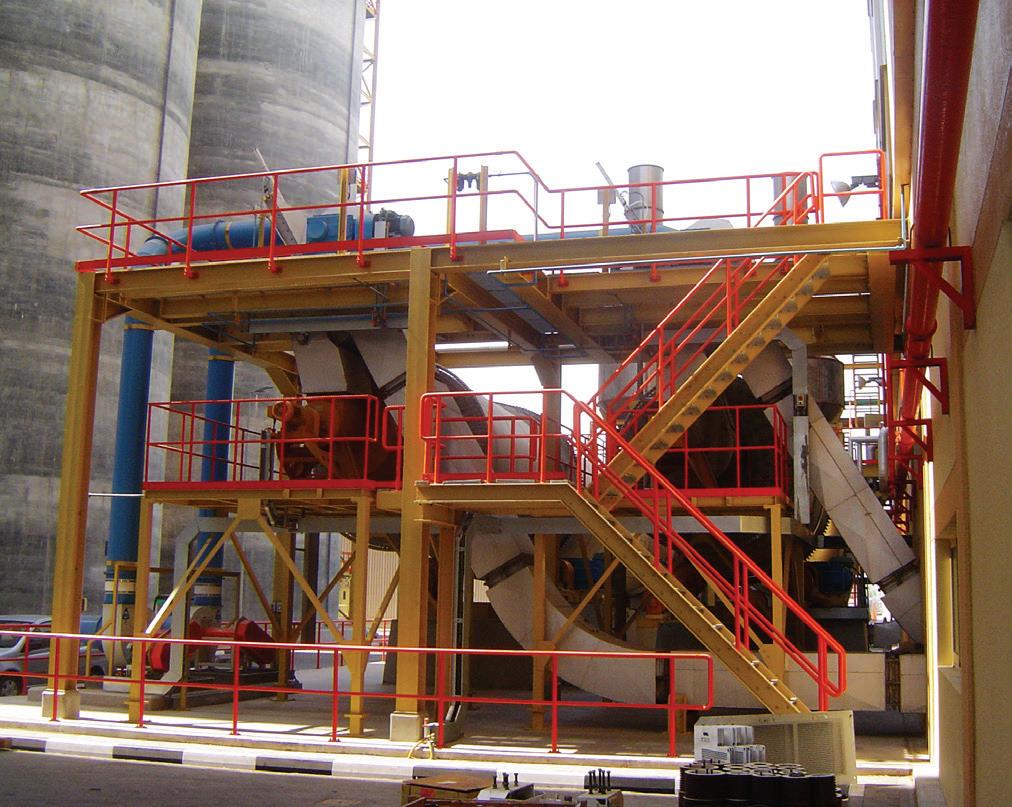

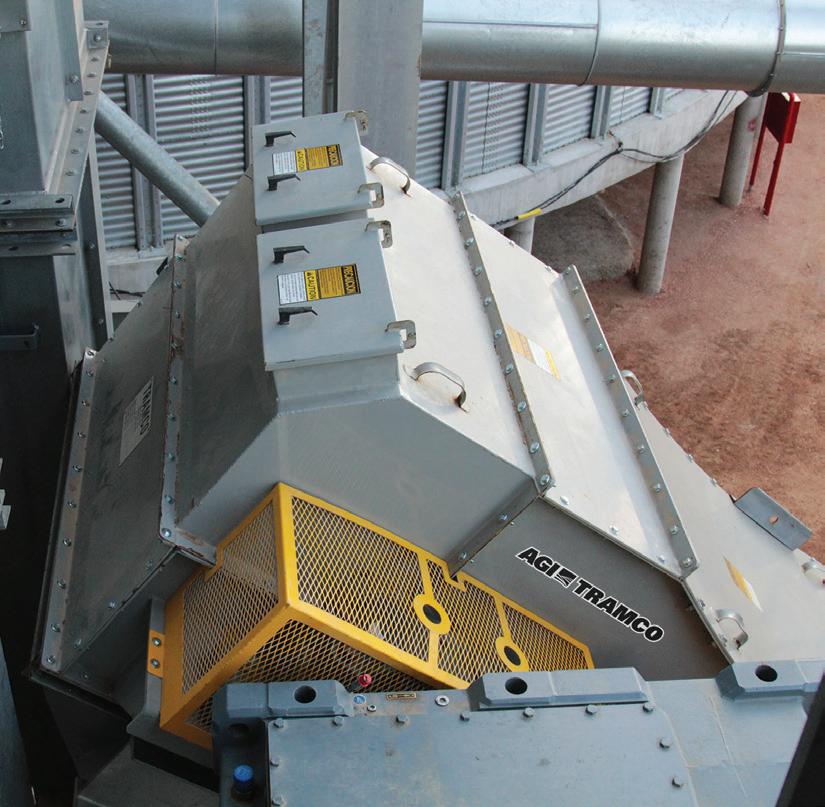
Your Provider of Processing Material Handling Equipment
AGI Tramco manufactures premier bulk material handling equipment primarily for grain, oilseed and biomass processing industries. To learn more about AGI Tramco conveyors and bulk handling equipment visit aggrowth.com/tramco.
Siting Strategy
When it comes to building pellet plants independently, many variables come into play when calculating a potential project’ projected profit margins, such as the price of diesel. When looking at transportation costs, industry experts point to a fiber-sourcing radius of less than 75 miles to maintain profitability. “The cost of diesel fuel is a critical variable,” Strauss says. “A lot is used in the woods for harvesting and gathering, and then in transporting the material. A good chunk of delivered wood costs account for diesel fuel.”
Fortunately, prices have been very low in recent years, Strauss adds, and are forecasted to remain so. “The cost to move that fiber should remain relatively low, but it’s still a risk,” he says. “The bigger the pellet mill, the longer the reach for wood.” And, Strauss emphasizes, as carbon policy becomes more refined, that distance will negatively impact the carbon footprint of those pellets.
As for how much transportation costs represent in total production costs, it’s a moving target, says Swaan. Swaan, known for his many contributions to the North American wood pellet industry over the past several decades, founded Pacific Bioenergy Corp. in 1994 in partnership with Carrier Lumber. The 350,000-metric-ton plant still operates today in Prince George, British Columbia. “When we first started out, the majority of our costs were for transportation,” Swaan says. “It was anywhere from $2 to $3 per ton for trucking, and we were paying $2 a ton for fiber.”

Grand River Pellets personnel stand outside the production facility, which began operations in 2019. PHOTO: GRAND RIVER PELLETS LTD.
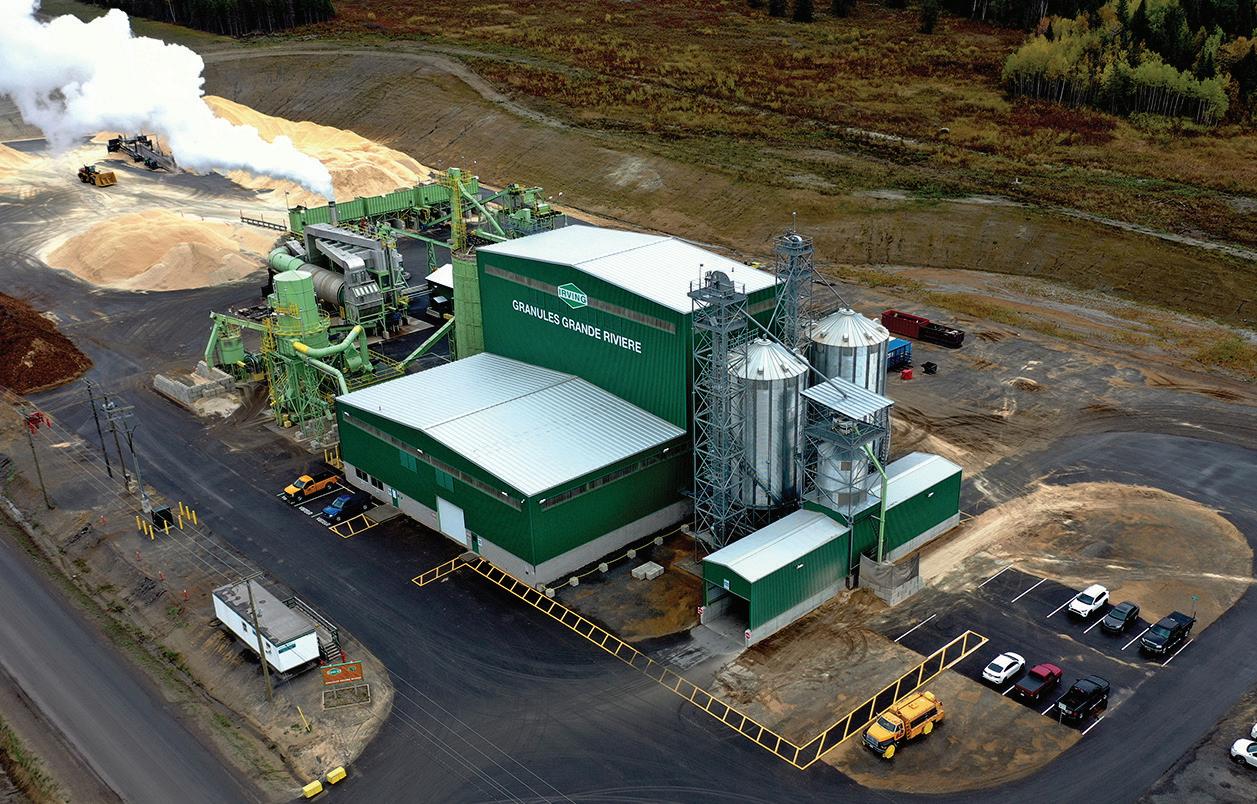
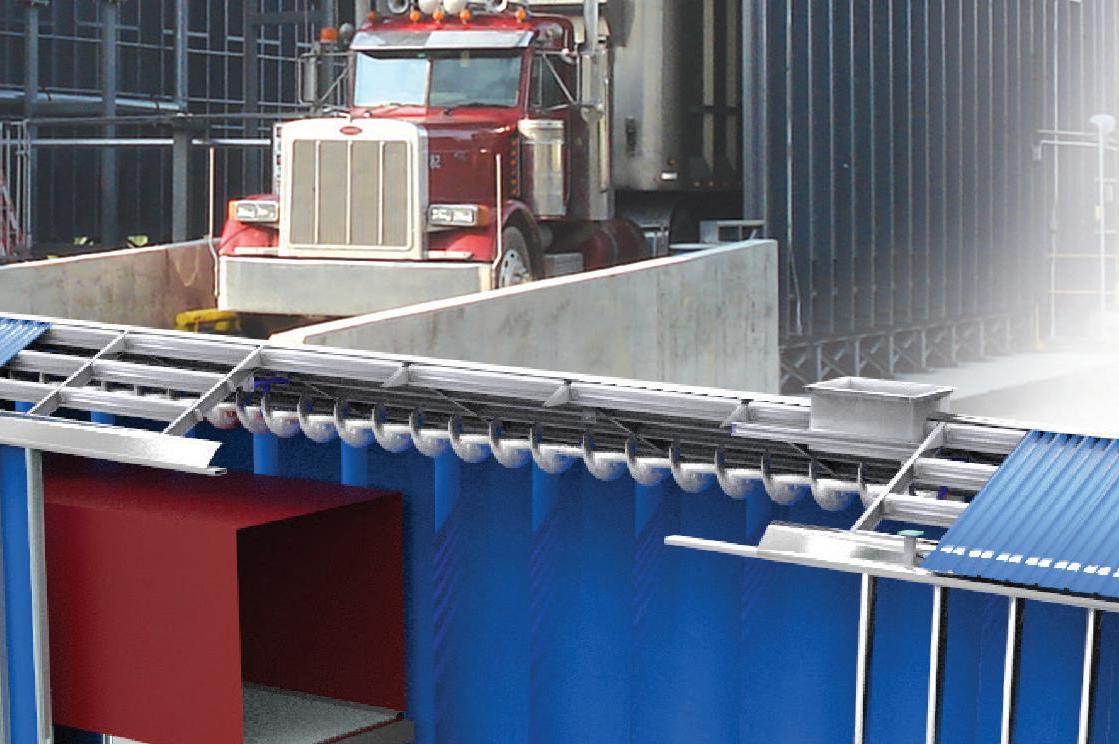
Fast forward about 25 years, the only competitors in B.C. are the pellet producers themselves, Swaan says. “If they overshadow each other in the baskets, or are competing with different suppliers or sawmills, they drive the price up themselves. In that case, the trucking cost is still in the $2 to $3 dollar range, but the actual cost of the fiber could be $40 to $50 [per ton] range.”
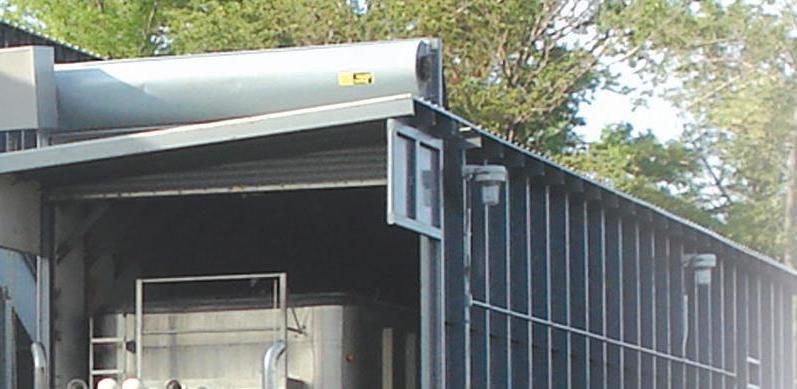

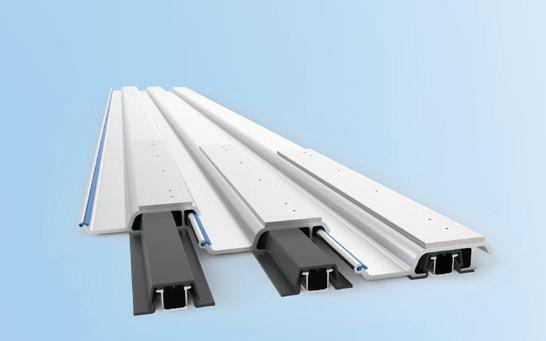

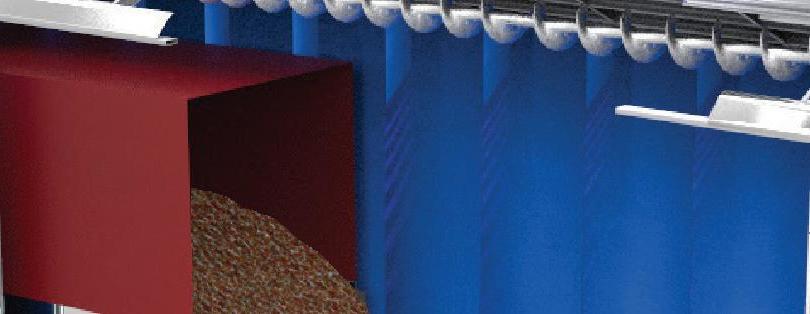
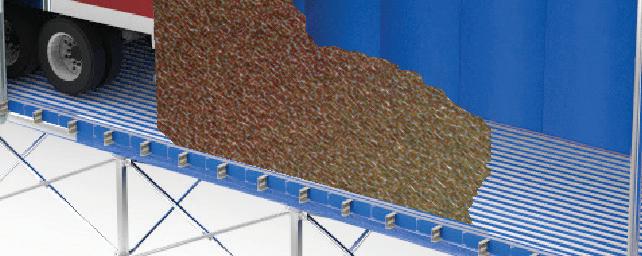





Pinnacle Renewable Energy’s Aliceville, Alabama plant is a partnership with Pinnacle (70%); Westervelt (20%) and Two Rivers Lumber (10%). The facility has an annual production capacity of 270,000 metric tons. PHOTO: PINNACLE RENEWABLE ENERGY

According to the U.S. EIA’s Monthly Densifi ed Biomass Fuel Report, in September, approximately 37.1% of fi ber used in U.S. wood pellet manufacturing was sawmill residue, 447,315 tons purchased at an average of $30.21 per ton. In the same month in 2019, only 21.9 percent represented sawmill residue, 352,430 tons with a price of $29.43 per ton. Though the September EIA report indicated higher per-ton prices in 2020 than in 2019, industry fi ber consultants indicate that in Q4 2020, sawdust prices sunk below 2019 prices.
That near 15% increase in sawdust purchasing—nearly 95,000 tons more in 2020 than in 2019—could be attributed to a housing boom parts of the country are experiencing, perhaps one of the few silver linings catalyzed by the ongoing pandemic. “In the Southeast, sawmills are running as hard as they can right now,” Strauss says. “Demand for dimensional lumber has increased, and that’s keeping the sawmills quite busy.”
Being dependent on but independent of the sawmilling industry, which has ups and downs, is a risk, Strauss points out. “For example, the availability of fi ber in British Columbia has changed because of mountain pine beetle devastation and forest fi res,” he says. “A lot of these plants are in areas where the sawmilling areas are taking a downtown because of the aftereffects,” Swaan adds. “As a result, there has been a ratcheting down their allowable cut, and less residues falling through the sawbox fl oors. The ones that are still effi cient performers are staying in play, but because there is
less fiber to be had, a lot of the plants in B.C. have had to transition into the woods and get access to some of that mountain pine beetle wood standing dead, and fire-damaged materials. That’s much more expensive to take on, and actually doubles their cost compared to just a few years back.
Plants next door to larger sawmills, however—especially joint ventures or partnerships—are faring better, Swaan adds. “Those located next door with a deal or joint venture, for these 150,000 and 200,000 [metric ton] plants, they’re produce enough residue to sustain that kind of production,” Strauss says.
In some cases, pellet production is eliminating a problem that sawmills might have. “Earlier sawmills were utilizing beehive burners to eliminate their residues,” Swaan says. “In most airsheds today in B.C. and the rest of Canada, they’re not allowed to eliminate it by burning it, so they are forced to find a home for it. If they enter a joint venture like Pinnacle and Tolko, for example, Tolko gets a fairly steady margin for their residues.”
A sawmill with nobody to buy its residuals, Strauss points out, has to pay to have somebody take it away.
Whether on-site or near a sawmill, or strategically locating near many fiber sources, proximity and transportation is likely to become increasingly analyzed, according to Strauss. “Carbon footprint is becoming a more important metric in pellets—for heating pellets and certainly for industrial pellets, as it already is,” he says.
In western Canada and the Southeast U.S., most are exports used in power stations, and the scrutiny of the total carbon impact of is likely to escalate. “Thus, minimizing the carbon footprint as it gets to its designation is critical,” Strauss adds. “With sawmill residuals, its much lower than bringing materials out of the woods to the pellet mill.”
Author: Anna Simet Editor, Biomass Magazine asimet@bbiinternational.com 701-738-4961 Pinnacle’s facility just outside of Vernon, British Columbia, is sited at Tolko’s adjacent sawmill. Waste is sent pneumatically directly from the sawmill via blow line (top of image) to the pellet facility, which is jointly owned by Pinnacle and Tolko via a 70-30 partnership. PHOTO: PINNACLE RENEWABLE ENERGY

An Elegantly Simple Biomass Sump Pump

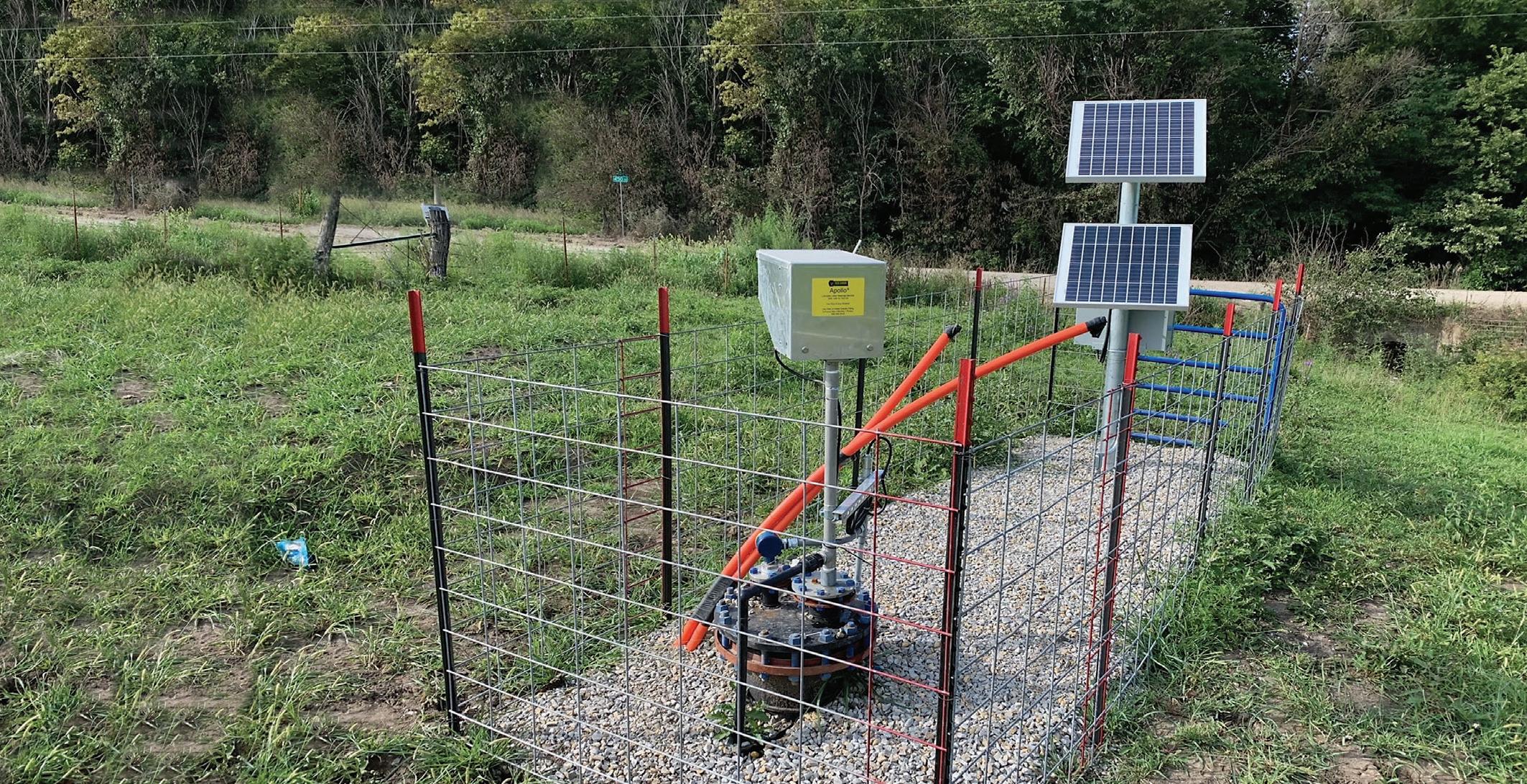

Any Composition or Viscosity, Less Maintenance, Lower Price

Reliable, non-polluting and affordable, Apollos are ideal for condensate sump and a range of biomass applications. Flows range to 3,800 gallons per day for solar models, 4,300 gpd for AC Electric. WHY APOLLOS? • Rugged • Few moving parts • Above-grade mounting • Safer, easier servicing …Because they work









